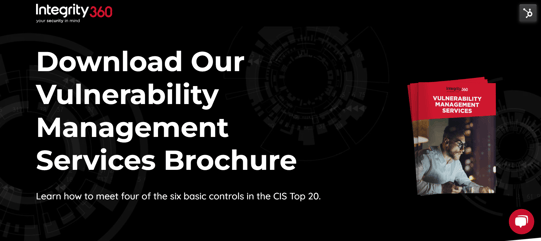With many companies struggling with the intricacies of cyber security, introducing an expansive supply chain into the equation can greatly exacerbate the already tough challenges. In this blog we take a look at what supply chain attacks are and some ways to reduce the risks they pose.
Understanding Supply Chain Attacks
A supply chain attack, often referred to as a third-party or value-chain attack, targets vulnerabilities in a system's supply chain. Instead of directly attacking the primary organisation or its infrastructure, threat actors focus on less secure elements in the supply network, which could be partners, vendors, or other affiliated entities. By compromising one of these weaker links, they can then gain unauthorised access to a primary system or data.
This type of attack capitalises on the interconnected nature of modern businesses. The most high profile example in recent years was the SolarWinds incident in 2020, where hackers manipulated the company's Orion software. Such an attack showcased the potential cascading dangers lurking in the interconnected digital landscape.
As organisations expand their operations, they often rely on external vendors for software, hardware, or services, inadvertently expanding their threat surface. Cybercriminals identify these third-party affiliations as potential entry points.
The inherent danger of supply chain attacks lies in their stealth and sophistication. They challenge the conventional wisdom of security by demonstrating that even if a company has robust direct defenses, vulnerabilities in its external affiliations can still be its undoing. As such, a comprehensive cyber security strategy needs to encompass not just an organisation's internal protocols but also its entire supply chain.
Identifying and Mitigating Vulnerabilities
Supply chain threats can arise in a wide variety of ways. An unwitting vendor might introduce malware via an innocuous email or lose their access credentials. This could then offer hackers a 'trusted' gateway into a client organisation's network.
The Supply Chain: The Weakest Link?
Enterprising hackers, set on infiltrating big corporations, tend to explore these entities' supply chain relationships. Through tools ranging from social engineering to in-depth reconnaissance, they pinpoint potential business partners or key individuals susceptible to phishing attacks. Once a soft spot is found in any part of the supply chain, they swiftly act to exploit it.
Many larger firms are intertwined with smaller businesses in their supply chains. These smaller entities, often working with tighter budgets, might lack advanced cyber security defenses, making them attractive targets for malicious actors.
However, forward-thinking supply chain stakeholders emphasise empowering their partners with cyber security tools and knowledge, instead of inundating them with rigorous checks.
Steps to Safeguard the Supply Chain
To minimise cyber threats, leaders within supply chains should advocate for a strong cyber security ethos among their partners. Supporting government-backed initiatives like the UK’s Cyber Essentials or standards like ISO27001 and delivering comprehensive employee training can play a pivotal role in curbing potential risks.
- Embracing and promoting basic cyber security norms—like avoiding questionable online platforms or scrutinising unfamiliar digital content can prevent a multitude of cyber threats.
- Continuous training helps team members identify and ward off potential phishing threats. While many malicious emails get trapped by spam filters, the evolving tactics of cybercriminals mean that caution is paramount. Any dubious communication should be promptly referred to cyber security specialists.
- Implementing robust organisational protocols, such as Zero Trust and role-based access controls and restricting the use of personal devices, can deter cyber intrusions. Regularly reviewing digital assets and keeping security tools updated are also crucial steps.

Prepare for the worst
The "too small to be noticed" mindset is alarmingly prevalent among SMEs. Contrary to this belief, their perceived vulnerability often places them in the crosshairs of cyber attackers. As gateways to bigger players in the supply chain, SMEs bear significant responsibility. Hence, larger organisations need to consistently monitor their supply chain's cyber security posture, ensuring regular training and best practices are in place to diminish breach risks.
How can Integrity360 help secure your supply chain?
Integrity360 offers several services to assist with securing your organisation’s supply chain.
Cyber Security Risk Assessment
Integrity360’s Cyber security Risk Assessment discovers and reviews potential risk from third parties in the supply chain, ensuring that every link is secure. With guidance from our experts, companies can ensure their suppliers and partners are safe. After spotting any weak points and risks, we suggest improvements and offer advice on how to improve the supply chain’s security.
Digital Risk Protection
Our Managed Digital Risk Protection service ensures that you get full visibility of the external threats facing your organisation. If a breach occurs in a supplier we will let you know about and offer remediation if necessary. To learn more about our Managed Digital Risk Protection service download our brochure using the link below.
Managed Security Service Edge (SSE)
Managed SSE enhances supply chain security against cyber threats by replacing traditional VPN reliance with data-aware zero-trust access to data centers and cloud apps. By eliminating the inherent trust associated with VPNs, it offers a more robust defense, ensuring only verified users access crucial data, thus bolstering supply chain security. For more information download the brochure below.
If you are worried about cyber threats or need help in improving your organisation’s visibility please Get in touch to find out how you can protect your organisation.










